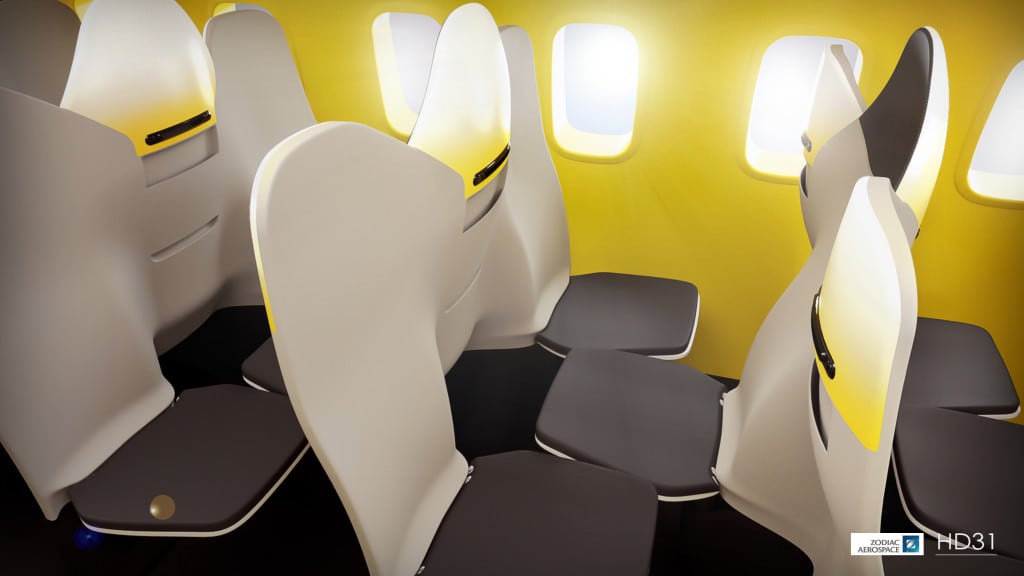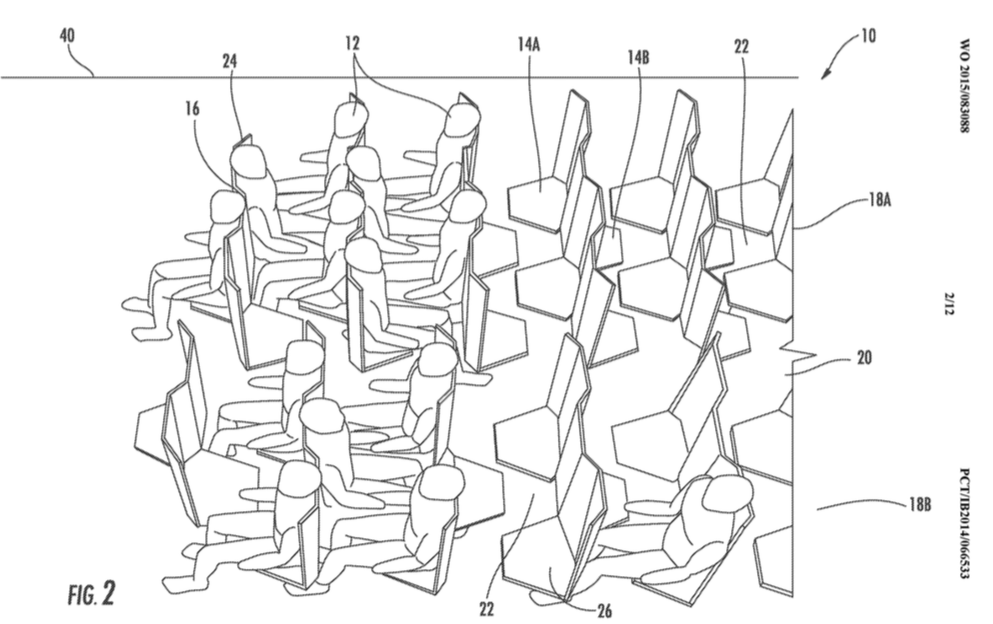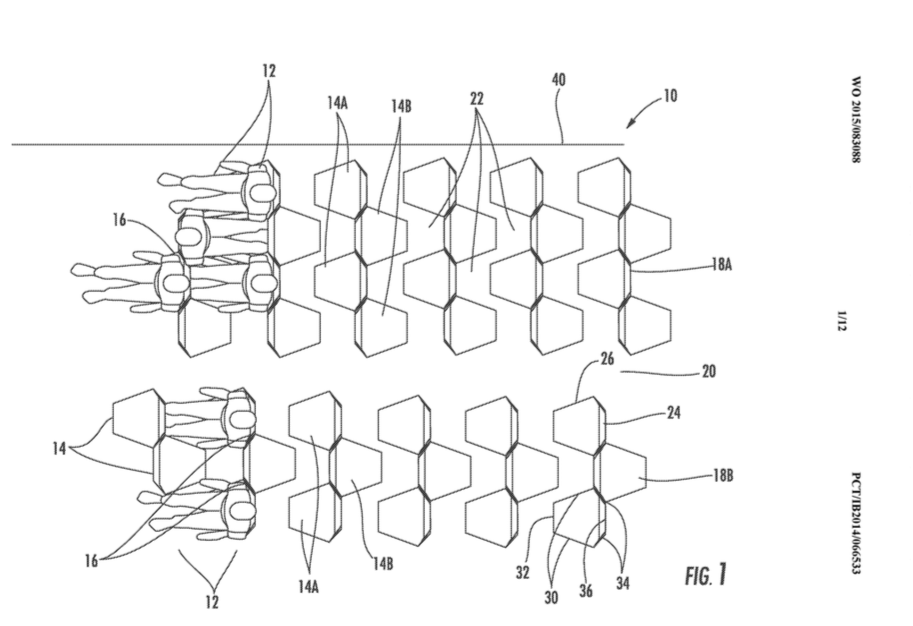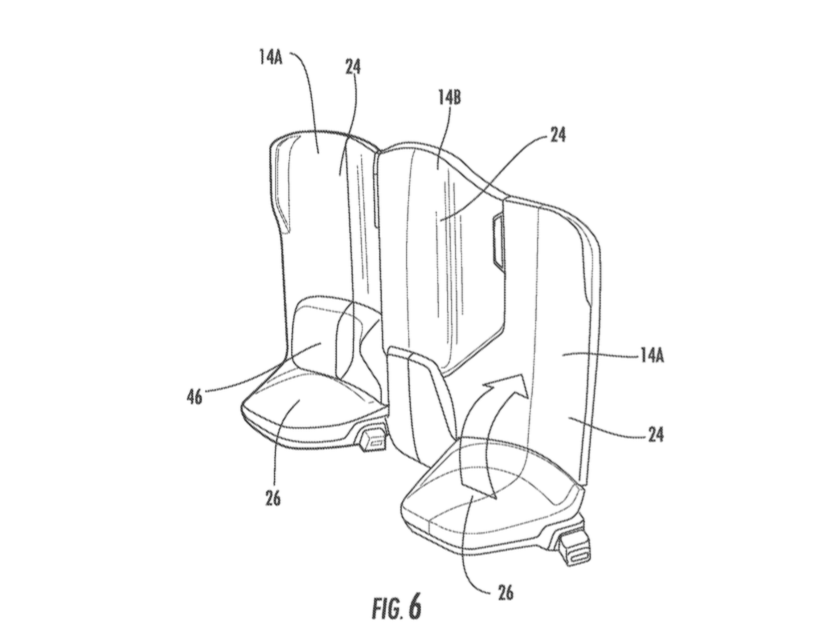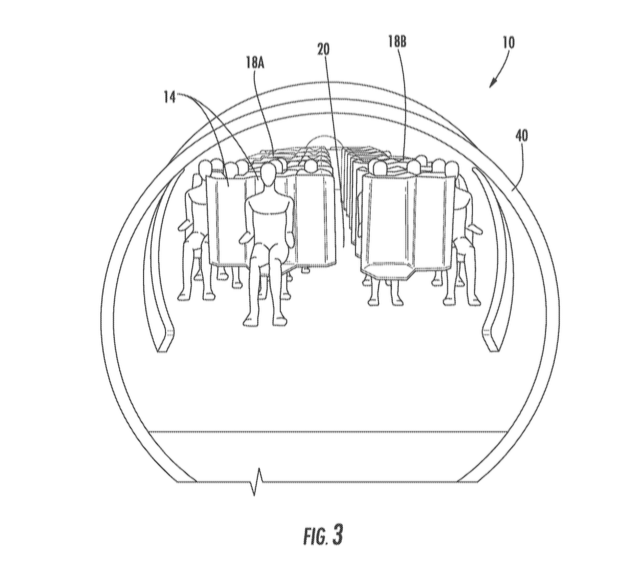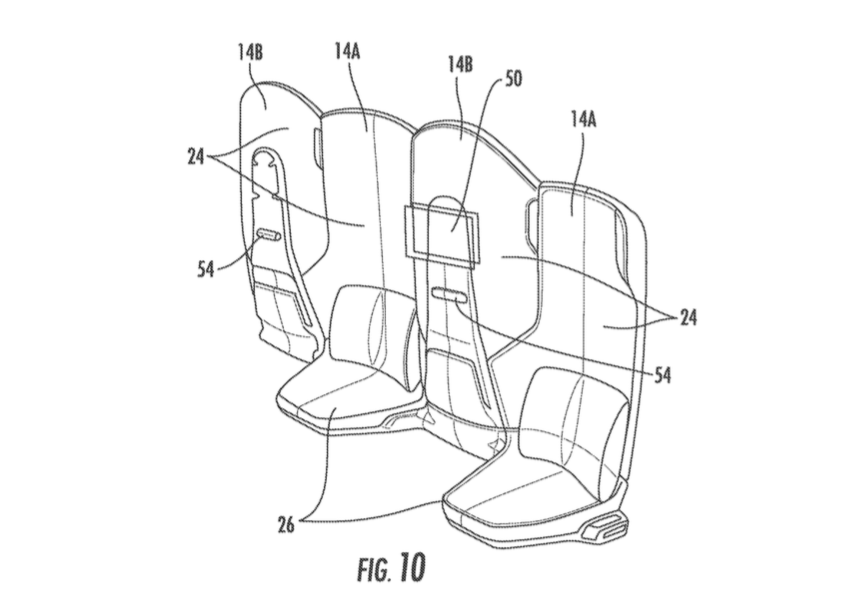Skift Take
We're still gonna keep looking at these oddities, because they're so darned amusing. Plus, we know you worry and we're here to help.
Zodiac Aerospace’s proposed bee-hive cabin lay-out for its HD31-3 seat concept has leaked in patent land.
It reveals a nightmarish cabin concept of forward/aft seat nests that could have you running for shelter in the nearest regional bus service or subway car.
Skift asks that you remain calm while viewing these troubling images.
Forward-aft seats and nested seating are nothing new in aviation. You’ve probably already flown on some forward/aft nested seats in today’s lavish Business Classes. If you’re old enough, you’ll remember flying on forward/aft facing triples on Southwest airlines back in the day.
Where forward/aft has taken off in Business, it’s resulted in some very comfortable seats.
Of course, the big difference with Zodiac’s HD31-3 honey-making cabin is that it’s an economy seat proposal. As presented, it would have passengers overlapping, leg to shoulders. But that’s not all bad.
Passengers with broad shoulders would have more room at the sides and those in the middle would feel less squished. Still worried? Remember that there are better seat designs that eliminate the middle-seat crunch, and even those haven’t taken off. Change in aviation takes a long time.
If you’re concerned about privacy and awkward moments of eye-contact with strangers, the HD31-3 nesting pattern wouldn’t have you staring directly at seating your companions opposite.
Also, the proposed flip up seats have advantages.
They could make getting in and out of rows easier, regardless of how the seats are stacked or how they’re shaped. They don’t have to be as lean as the ones presented in the patent.
Cabin service could be difficult—assuming you’ll get any sodas or snacks in this nightmare cabin of the never, never. The time it would take airlines to figure out those logistics would work in passengers’ favor. They’ll think twice before saying: “Yeah, let’s hive this thing!”
Getting up and out to use the lavatory in this configuration is a worry. That could be resolved by eliminating lavatories entirely, which would allow airlines to put in even more seats. Don’t worry. We’re kidding. That’s not gonna happen either.
This hive-cabin concept is just more lather, rinse, repeat—in aviation technical terms.
Zodiac brought the HD31-3 forward/aft hive-cabin concept to last year’s Aircraft Interiors Expo in Hamburg and it generated buzz. People looked at it. They scratched their heads. They moved on.
Even so, there are hidden features in the patent, invisible to passengers, that could prove valuable for Zodiac.
That’s the whole point of patents. You toss everything in, like a nice stew, run it through the Infinite Improbability Drive, and come out with chicken soup. Sometimes a chicken. Occasionally, a pot of petunias. You’ve protected all the little notions that really work, by hiding them among the big shocking ideas that wouldn’t work at all.
If you’re still feeling anxious, and clutching your traveler’s towel for comfort, consider that any manufacturer would have a hard time getting this design to fly without major modifications.
There are critical Head Impact Criteria tests (HIC in the trade) to pass, so those hard-shell seat backs can’t be set too close together. Forget adding in-flight entertainment screens, even Bring Your Own Devices (BYOD), as Zodiac proposes in the patent. Those would make the certification process more hairy, if you put the seats too close together .
There’s also the handy 90-second evacuation rule working in passengers’ favor. Manufacturers have to prove to regulators that everyone could evacuate the cabin in 90-seconds or less, for any cabin layout to pass muster. Flip-up seat benefits aside, the relative confusion caused by passengers nested this way could make passing the 90-second evacuation difficult.
So Why Do This to Us?
These scary designs arise because, despite appearances, the aviation industry likes to innovate. Competitive manufacturers, creative designers, and daring engineers abound. They will try many ideas on for size.
For better or worse, regulations, complex certification requirements, and the airlines’ own hesitation to push innovation too far, will result in uniform (sometimes boring), safe cabins.
Thus, aviation becomes more cookie-cutter than cutting-edge.
Sometimes this process delays designs which would benefit passengers, but it also helps check any airline ambitions to make cabins truly unbearable and unsafe.
More often than not, aviation’s weirdest cabin concepts remain concepts—never more than a sketch on a napkin in the restaurant at the end of the universe. But towels are always handy, so pack a light-weight one in that standard-sized carry-on of yours.
If nothing else we’ve said convinced you, this last thought might make you happy: Zodiac’s quite comfortable creations are 1,000 times more likely to take off.
The Daily Newsletter
Our daily coverage of the global travel industry. Written by editors and analysts from across Skift’s brands.
Have a confidential tip for Skift? Get in touch
Tags: aircraft interiors, design, zodiac aerospace
Photo credit: Patent illustration of Zodiac's Economy nested forward/aft cabin concept. Zodiac Aerospace
